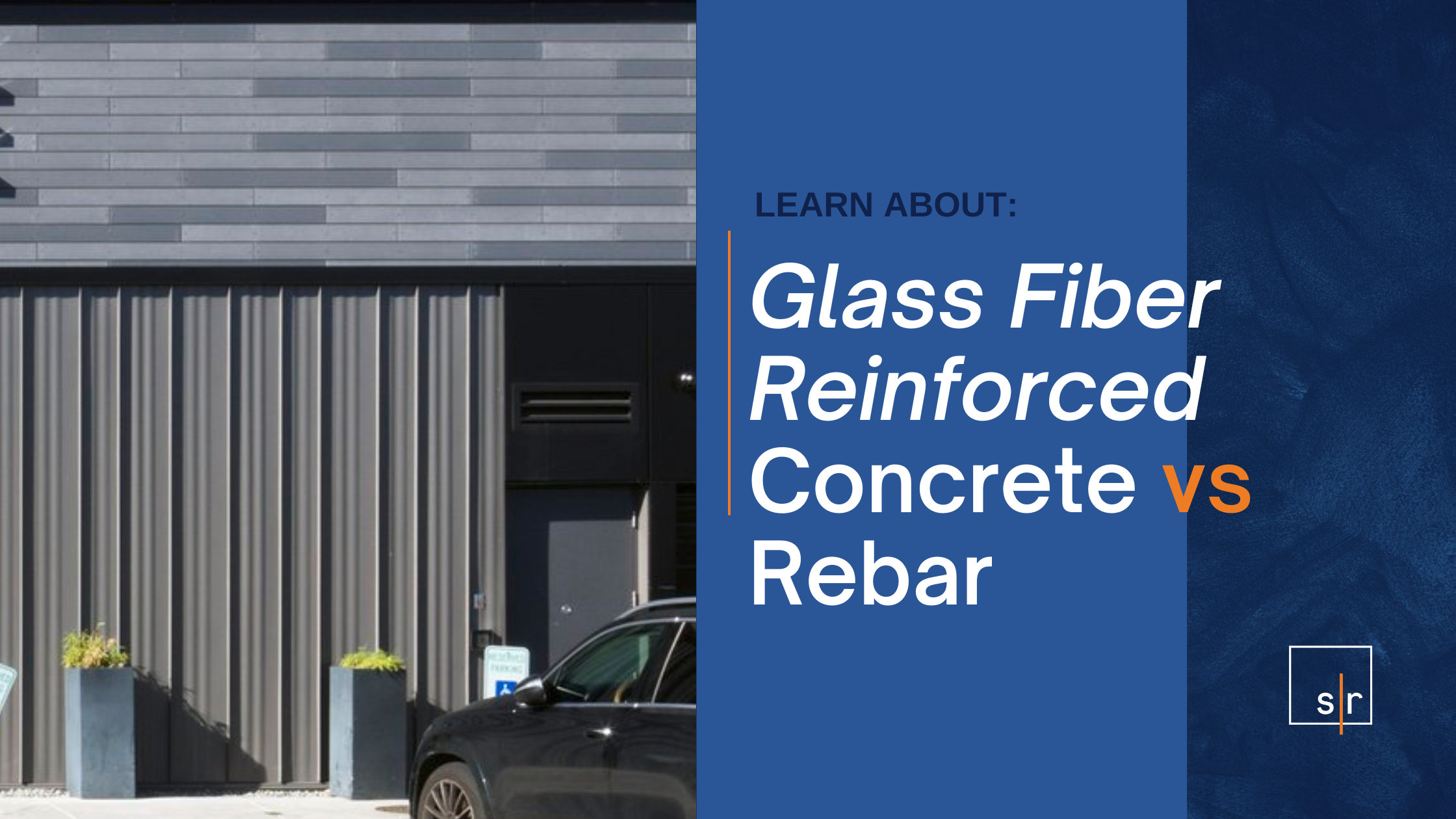Glass Fiber Reinforced Concrete vs Rebar: What Commercial Builders Need to Know
Understanding Concrete Reinforcement Basics
Concrete is firm under compression but lacks tensile strength. In commercial construction—where structural performance is non-negotiable—reinforcing concrete is essential to prevent cracking, enhance load-bearing capacity, and maintain structural integrity over time.
Traditionally, this reinforcement has come in the form of steel rebar. However, with innovation at the forefront of materials science, alternatives such as glass fibre-reinforced concrete (GFRC) are emerging as viable, high-performance solutions for specific use cases in the built environment.
Steel Rebar – The Industry Standard
For decades, steel rebar has been the default choice for concrete reinforcement. Its legacy is rooted in its high tensile strength and compatibility with conventional construction methods. Most design professionals and contractors are familiar with how it integrates into poured concrete, and its behaviour under load is well understood.
However, this traditional material has its limitations. Steel is inherently vulnerable to corrosion, especially in environments where moisture, salt, or chemical exposure is prevalent. Over time, this corrosion can compromise structural performance and demand costly maintenance or repairs. Additionally, the weight and rigidity of steel rebar make it labour-intensive to transport, cut, and install, often extending project timelines and increasing labour costs.
What is Glass Fiber Reinforced Concrete (GFRC)?
GFRC offers a modern alternative, replacing the linear reinforcement of steel with a more integrated and distributed approach that utilizes glass fibres. These fibres are finely dispersed throughout the concrete matrix, creating a mesh-like network that supports stress distribution in multiple directions.
The core advantage of GFRC lies in its corrosion resistance. Because the reinforcement is composed of non-metallic glass fibres, it is immune to rust, making it especially suitable for environments exposed to moisture or chemicals. Furthermore, GFRC is significantly lighter than steel-reinforced concrete, which translates to easier handling, reduced structural load, and faster installation. Despite its lightweight, GFRC can offer impressive tensile strength, especially when tailored with the correct mix design and curing process.
In architectural applications, GFRC also offers exceptional flexibility. Its moldability makes it ideal for creating custom facade panels, acoustic cladding, and other aesthetic treatments that combine form with functional strength.
Comparing Performance: Glass Fiber vs Rebar
When comparing the two materials, both steel rebar and GFRC have distinct strengths, as well as specific limitations that inform their suitability for different construction needs.
Steel rebar is unmatched in terms of tensile strength and performance under heavy, concentrated loads. This makes it indispensable for core structural elements, such as columns, beams, and deep foundations, where structural redundancy and load-bearing capacity are critical to mission success. However, its susceptibility to corrosion and its significant weight can limit its long-term value in more exposed or specialized environments.
In contrast, GFRC excels in areas where corrosion resistance is essential. Its non-metallic composition makes it ideal for applications near the coast, in industrial zones with chemical exposure, or in structures that demand long service life without intensive maintenance. Additionally, the material’s light weight makes it easier to handle, particularly for prefabricated elements and panels. While its tensile strength may not match that of steel in high-load scenarios, GFRC is more than adequate for a wide range of commercial applications, especially when designed to leverage its surface-area-based reinforcement strategy.
Use Cases in the Construction Industry
For projects involving substantial loads, high structural redundancy, or strict adherence to traditional building codes, steel rebar remains the most reliable choice. Applications such as deep footings, parking garages, bridge decks, and heavy foundation systems benefit from rebar’s sheer strength and legacy performance data.
On the other hand, GFRC is a compelling choice for environments that prioritize durability and design. Architectural facades, sound-absorbing wall panels, and decorative cladding are prime examples of these materials. In spaces where corrosion is a concern—such as swimming facilities, coastal resorts, or laboratories—GFRC’s material durability ensures long-term reliability without the need for additional protective coatings or costly maintenance cycles.
The choice also depends on project priorities. If reducing structural load, improving installation timelines, or achieving complex design geometries are top of mind, GFRC offers clear advantages over traditional steel.
Conclusion: Choosing the Right Reinforcement for Your Project
Both steel rebar and glass fibre-reinforced concrete have earned their place in commercial construction, but for different reasons. Steel remains the go-to for heavy structural loads and foundational integrity. GFRC, however, offers a forward-looking solution that prioritizes corrosion resistance, lightweight performance, and design flexibility.
For commercial projects where long-term durability and ease of maintenance are crucial, GFRC offers an excellent return on investment, particularly in facade systems and acoustic panelling, where form must meet function.
Ready to Reinforce Smarter?
Please consult with our experts to determine the best concrete reinforcement solution for your next project.
Discover our GFRC-enhanced acoustic panels, designed for exceptional architectural and structural performance.


